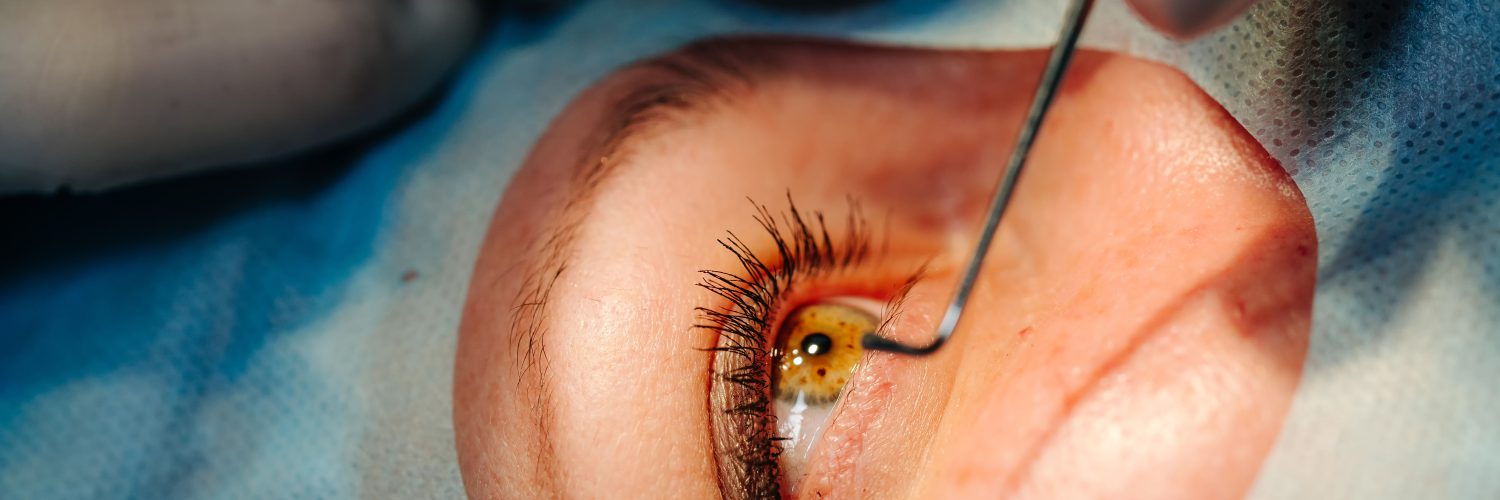
I have cataracts. Will I need surgery and what does that involve?
A cataract is formed when the lens in your eye becomes cloudy and hardens affecting the amount of light that can pass through it to your retina. They are caused when the normal proteins and fibres in the lens begin to break down and form into clumps and cloud the lens blocking the light from passing through it. Over time your vision will become blurred.
Whilst cataracts usually form as part of the aging process, particularly if you have a family history, they can also affect younger people as a result of a health condition such as diabetes, from eye trauma or surgery, exposure to X-rays, radiation treatment or damaging ultraviolet rays, certain medications or if you are a smoker. Congenital cataracts may be present at birth.
Although they develop over time, eventually the affected lens will need to be surgically removed and replaced with an artificial lens.
When is the right time to have surgery?
While there is no set time, surgery is usually recommended when loss of vision is making life difficult and interfering with your daily activities, such as reading and driving. Cataracts don’t usually harm your eyes and so there is generally no rush to have surgery in the early days and delaying generally wont affect how well your vision recovers after surgery. Everyone’s speed of progression is different, so you will be able to discuss with your eye surgeon about when the time is right for you. If you have cataracts in both eyes, one eye is normally done first. Time will be allowed after the first surgery for your eye to heal before your other eye is attended to.
What happens during cataract surgery?
The operation involves the removal of the clouded lens and replacing it with an artificial lens, which is clear and made of plastic. This is called an intraocular lens and is positioned in the same place as your natural lens and shaped to fit your eye. The procedure takes about 30 minutes and is done as a day surgery on an outpatient basis.
Drops will be placed in your eye prior to surgery to dilate the pupils. You will be given a local anaesthetic to numb the area so you won’t feel anything, and you will usually stay awake during the procedure. There are two main types of procedures for removing cataracts:
- Phacoemulsification (small incision) surgery. This procedure is the most common for cataracts. A tiny is cut s made in the cornea and a minute probe is placed through the cut. This device gives off ultrasound waves that break up the clouded lens into small pieces, which are then sucked out. The artificial lens is then inserted through the cut and into position.
- Extracapsular (large incision) surgery. Although not as common, your eye surgeon may recommend this procedure if the phacoemulsification procedure is not suitable for you, for example if your cataract is larger or denser and will not break apart easily. A larger cut will be made and the clouded lens will be removed in one piece and swapped for the artificial lens.
What can I expect after surgery?
Most people find that their vision improves more or less straight away, or at least within the next day or two, but you will have some discomfort for a few days afterwards. Your eye should completely heal within a few weeks. You should be able to go about your normal activities as soon as you get home, although it’s best do avoid doing anything strenuous for a while. As with any surgery, there is a slight risk of infection or bleeding, but this is rare. Once your vision has settled down, you may need to have another vision test to determine if you need new glasses.
Cataract surgery is generally very successful in restoring your vision. The good news is that once your clouded lens has been replaced, a cataract will not ever form again.

